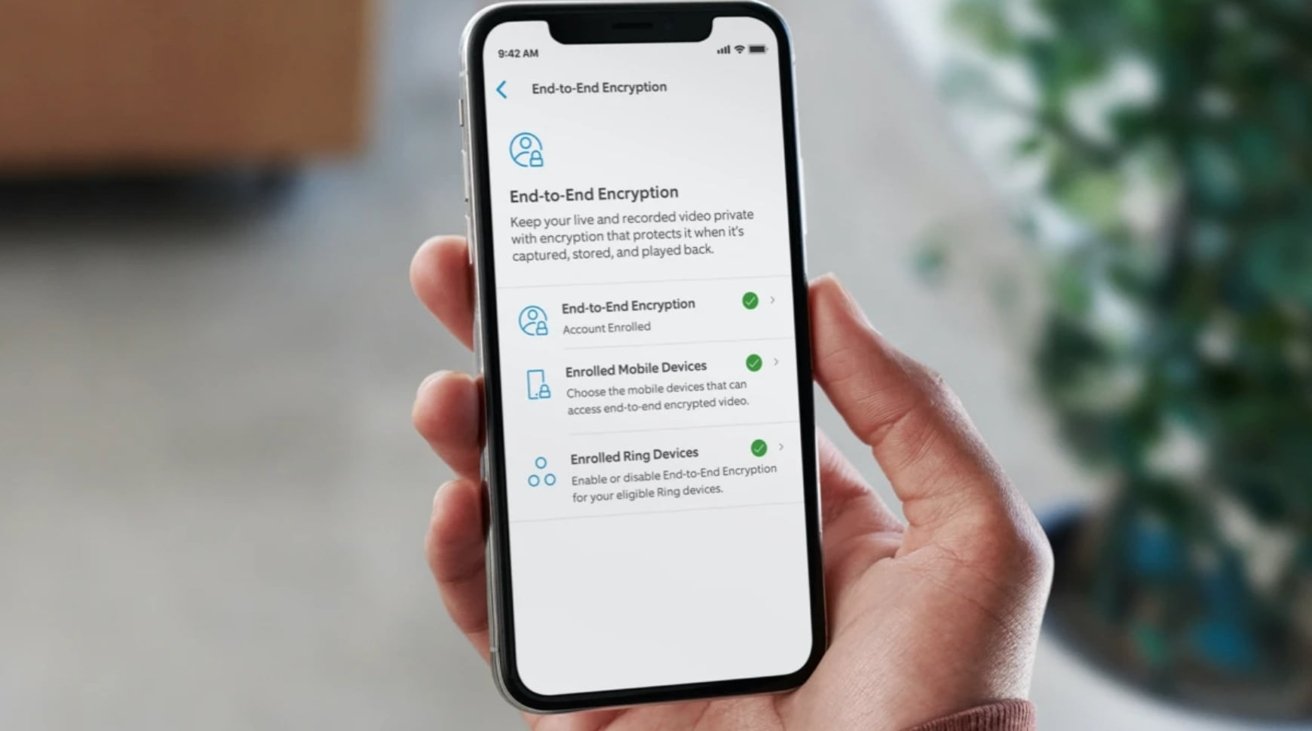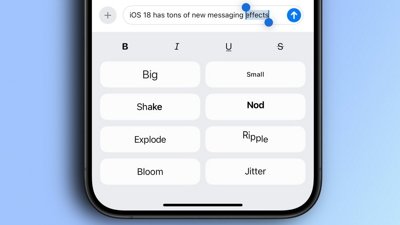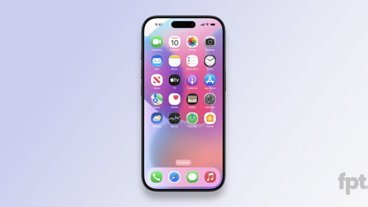Amazon's Ring is adding end-to-end encryption of video for its smart doorbell product and other devices, limiting videos to only be viewable on a user's chosen iPhone or other devices.
Following an initial technical preview in the United States, the end-to-end encryption feature is being rolled out to all Ring users internationally. The change will potentially bring more privacy and peace of mind to users, for a service that has repeatedly been the subject of criticism over the subject.
Previously, Ring would encrypt customer videos uploaded to the cloud and stored on its servers by default. Under the new feature, which can be set up from the Ring app, the video will be viewable on the device with end-to-end encryption enabled.
Ring is also rolling out the option for users to choose an authenticator app to further secure their account, on top of the existing SMS two-factor authentication process. Support for CAPTCHA is also being introduced, which Ring claims will help prevent automated login attempts by bad actors.
Lastly, a "new, automated self-service process" is being introduced to let customers securely transfer ownership of used Ring devices, without requiring a call to customer support. The process will ensure all previous videos and events recorded for the former user will be unlinked from the hardware when ownership is transferred.
The inclusion of new security features in the app may go some way to ease the concerns of critics, who have witnessed many privacy-infringing issues with the Amazon-owned smart device company's services.
In January, a bug was discovered where the precise location data and home addresses of users who posted to the Ring Neighbors app were exposed.
One year earlier in January 2020, the Android version of the app was found to include many third-party trackers, harvesting customer data. The following March, Ring announced it had stopped sharing data with third-party firms.
Ring's support teams were also accused of potentially having access to videos recorded by users in January 2019, though the company claimed the videos were taken from publicly-shared videos in the Neighbors app.
In June 2021, Amazon changed its policies covering how law enforcement could obtain footage captured from Ring. In 2019, Amazon was accused of helping produce surveillance networks using its devices and working with police to make it relatively easy to access video when asked.
Keep up with everything Apple in the weekly AppleInsider Podcast — and get a fast news update from AppleInsider Daily. Just say, "Hey, Siri," to your HomePod mini and ask for these podcasts, and our latest HomeKit Insider episode too.
If you want an ad-free main AppleInsider Podcast experience, you can support the AppleInsider podcast by subscribing for $5 per month through Apple's Podcasts app, or via Patreon if you prefer any other podcast player.
 Malcolm Owen
Malcolm Owen



 Oliver Haslam
Oliver Haslam
 Amber Neely
Amber Neely
 Marko Zivkovic and Mike Wuerthele
Marko Zivkovic and Mike Wuerthele

 Andrew Orr
Andrew Orr











1 Comment
This is a great feature that will undoubtedly make some folks feel better about controlling which devices have access to view what's been captured by their Ring cameras. Unfortunately there are several significant functional restrictions that are put in place when enabling end-to-end encryption. The setup for end-to-end encryption describes these in detail. Users will have to choose whether they want to give up existing functionality and convenience to have end-to-end encryption enabled.
There's nothing at all surprising about dealing with this kind of trade-off between convenience and security when it comes to encryption. Ideally, it would be nice if Ring could make the tradeoffs a little more granular, i.e., which features no longer work with end-to-end enabled, but the definition of "end-to-end" usually doesn't leave any wiggle room for exceptions.
I'm totally cool with what they've done to make this feature available. In fact, I'm totally cool with what they already had in place. The degree of configurability that Ring allows around all aspects of video storage, retention, encryption, device participation, etc., is very impressive. When I add interior facing cameras I will definitely revisit this subject with greater scrutiny since I'll want to raise the security bar on access to interior cameras. But if someone wants to do a man-in-the-middle attack or some other nefarious intercept of video from my exterior facing cameras so they can see my neighbor's dog taking a dump on my lawn, I'm not really that worried.